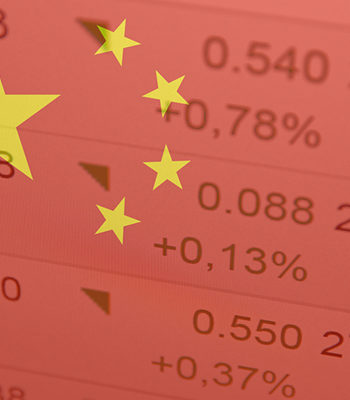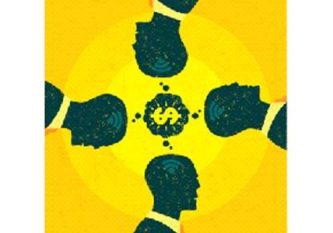
Offices in Chicago And Chengdu: Managing the Complexity of the China Market
One of our clients is the executive responsible for the Global Accounts served by her company, a major telecommunications supplier. We visited her recently, after two scheduled meetings had to be postponed. When we arrived, she apologized for the schedule changes, saying that she’d been in China three times in the last four months, with two of those trips emerging as last-minute journeys. “I’m beginning to think I should relocate my office. More often than not, my own customers are in China for some reason or another, and even when I get together with them here, most of the discussion involves something about the China market, their factories in China, or a similar topic.”
We continued the discussion with her, noting that statements like hers were increasingly familiar, not only in her industry, but across the board. We have heard parallel statements from clients in the automotive industry, the construction industry, the electronics industry, the pharmaceuticals industry, and many other sectors of the economy. She described the two unscheduled trips to us.
“The first trip surfaced when [a customer company] called and said that they were relocating the manufacturing operations for one business line to China, and they needed to know yesterday how we were going to support them there. Now we’ve been in China for nearly twenty years and seen a lot of work migrate there for cost reasons, but quite honestly didn’t see this relocation coming. Why? They are moving not to save money, but to be closer to their market! They said that they see virtually all of their growth coming from the China market over the next decade.”
Her comments were not unfamiliar. We have seen this same theme emerge, for example, as a key conclusion on a project we did for a major automotive supplier . It is quite easy to provide a long list of such examples in recent years.
She continued with her update. “The next two trips were triggered by our sales group. They discovered China – one of our sales people thought he was Richard Nixon and needed to open China. And now we have a customer in Chengdu – which I had never heard of before – that thinks we’re going to build a factory, establish a local supply base, and put into place a technical support team by the middle of next week. Not quite that quick, but faster than we’ve ever ramped up in a new location before.”
This too was a somewhat familiar story. Quick successes are still rare in China, but they are getting quicker. We see two reasons for this. First, the steady need for new suppliers and new capacity is one of the implications of an economy that grows at about 10% per year and seems to be exploding in terms of the ability of the Chinese customer to buy products from cars to apartments to electronics to services.
The second driver of Chinese interest in new suppliers is the aspirations of many Chinese firms to become world market participants, not just in the industries in which low labor costs offer an advantage, but in mainstream global industries like autos, computers, white goods, and telecommunications. We have seen Chinese auto malls in several Latin American countries lately, and don’t think it will be too long before they are in the U.S. as well. We’ve purchased Chinese branded appliances, and been pleasantly surprised with their performance. We have long purchased computers that are now being made by a Chinese-owned global company. The list of such examples is long. And the implication of Chinese aspirations to global markets is that they need to learn global market skills, with the fastest way to do so often being a relationship with a strong practitioner who can bring such skills into the relationship. Often that practitioner makes their contributions by serving as a first tier supplier, with responsibilities for certain processes or components within which the global competency requirements are most demanding.
Our client brought her story to a conclusion and explained her reason for wanting to talk with us: “I now have two major customers in China, one a global firms with whom we’ve worked for a long time in the past in other locations, but never in China, and the other a Chinese firm with which we are starting out cold. Both firms are going to be largely Chinese in terms of their people, as the firm that is relocating is transferring technology and processes, but hardly any people on a permanent basis. So, what I need to know is how to build strong major customer relationships in China. That’s worked well for us in our other major markets. Does the concept apply in China? What’s the same? And what’s going to be different?”
We set out to provide some answers to this client.
First, Don’t Forget What You Already Know You Should Do
Our research relating to top performing strategic account relationships shows, over and over, in culture after culture, that customers reward key competencies. They expect their suppliers to invest in the relationship, be impeccable with respect to implementation, and surprise them with innovation. Failures along the first two dimensions, in our experience, account for far more lost relationships than does the usual villain named Price.
Competency in managing strategic account relationships yields customers who are satisfied and see value. In turn, such strategic accounts reward their high-competency suppliers with their business. The evidence from our research is that there is a strong and actionable relationship between particular competencies important to strategic accounts and the growth that is realized from these accounts. Strength in terms of these three competencies creates relationships that are more profitable, grow faster, are more stable, and showcase openness to positive evolution in the roles and boundaries between the two firms.
As initial relationships are developed, firms are well advised to invest in three dimensions of the Relationship Competency: Commitment, Knowledge, and Partnership. As these relationships evolve and begin to grow, follow-on investments in the Implementation Competency can keep growth alive, particularly when focused on Processes and Linkage. The final building block for relationships capable of delivering breakout growth is focused on the Innovation Competency, emphasizing Creativity, Timeliness, and Energy. In each area, lessons from best-in-class practitioners and examples gleaned from numerous best practice firms suggest the routes and types of action plans that will be applauded by customers.
We find this to be as true in China as elsewhere, perhaps with even more amplification in terms of the loyalty shown to a strong practitioner and the willingness to shed one that is disappointing. Wherever the lessons have been learned, they have been learned well. Chinese firms establish high expectations for their suppliers and are shocked – and react badly – when they are disappointed.
We’ve also observed that companies that are smart enough to reinvest some of the payoffs from growth in action plans that nurture their strategic account managers and strengthen their relationship management competencies can start a virtuous cycle through which the growth potential of strategic account relationships is realized year after year: That lesson will apply in China as well, as the growth of the Chinese economy provides a nearly sure bet that there is a growth reward to be had for those suppliers that deserve it.
So our first message to our client was this: All the things that have served you well should be packaged and put into containers for export to Chengdu. You will need them there.
Some Things, However, Will Be Different
While it is always tempting to make a long list of differences from one business environment to the next, we concluded that there were three things we needed to underscore in terms of the differences that our client should expect in the Chinese business environment. That doesn’t mean that there aren’t going to be a large list of minor differences and variants on themes, just as doing business in New England is a bit different from doing business in Texas. But we feel that not forgetting the basics and being ready to address our “Big Three Differences” will provide the foundation for success.
First, major customer relationships in every culture are always to some degree personal. People are involved, so that is natural. In fact, most strategic account relationships started with a small group of people, perhaps only a sales person and a buyer. But over time, the relationship took on organizational dimensions, business functions learned to mesh, promotions and retirements were weathered, and the relationship continued to flourish.
In China, whatever weight you place on the “personal dimension”, double it, double it again, and then suspect that you may have still underestimated its importance. That doesn’t mean that your organization can be incompetent, as we’ve noted above. It just means that the relationship will be embodied in key people to a much greater degree than most firms are used to from other geographies.
We observed one firm that was developing a relationship. It established a joint venture, built a factory, started operations, and then went through a two year period in which the same U.S. team never appeared in China for a second time. Delegation after delegation visited, often with increasing seniority, tried to work on problems, and ended up with a significant write-off. The leader of the U.S. side of the venture, in a discussion with one of us, gave an impassioned speech about how China is too immature, that they didn’t understand business, that his firm had given it 200% and never got anything back, and that the Chinese were impossible to work with on any serious business initiative.
The Chinese leader of that side of the joint venture confided in us that their U.S. partners didn’t seem to be serious, that no one in the U.S. firm felt the joint venture was worth his or her time, and that the two firms never got beyond the stage of the relationship when they decided to start working together. The Chinese leader also spoke passionately about having been fooled into believing that the U.S. firm wanted to do business with them.
The gap was the “people side” of the relationship. The U.S. firm’s focus was organization, while the Chinese side’s focus was far more personal. It is probably fair to be sympathetic to both sides’ passionate statements, as reported above, as that’s about what they saw through their lens. For the U.S. firm to have made a success of this initiative, it needed to anticipate and honor the Chinese expectations regarding the people side of the relationship.
The second difference we see is speed. Most of the industries with which we’ve worked in developed markets see far longer decision cycles than are present in China today. One case study emerged from a recent project we did with a vehicles industry supplier. They too saw the China market opportunity, and see an opportunity to evolve a technology for use in that market. They put a development team on that project, and this team moved through their normal gates at a good pace, allowing the firm to bring some samples to China for a next round of discussions. To their surprise, they found that the Chinese had already taken the concept and were into production with it. This wasn’t an instance of piracy or patent violation; it was an instance of short cycle times.
Some of the cycle time advantages we’ve seen in certain Chinese industries are because they are able to “skip steps” that we’ve learned or imposed in other cultures. That will probably change over time as the Chinese build in such steps for regulatory, safety, or other reasons. Some of their advantages simply stem from a tendency to just overwhelm the problem with resources, a luxury other firms are often unable to replicate. And there are other reasons unique to certain industries.
But the emphasis we provided earlier on implementation and innovation competencies means that cycle time issues are real issues. You can’t be seen as a good implementation partner if you’re late. You won’t be seen as an innovator if others are ahead of you. As a result, the cycle time issue becomes a major difference that must be addressed for companies to become successful in managing strategic accounts.
This falls into the category of very hard work. When you think about the underlying issues that define cycle and response times, they involve core elements that in many ways define a firm – its processes, its decision-making and approval structures, its information systems and loops, etc. We advised our client to plan to re-engineer many of these for the China market, or risk being too late too often. Even in familiar cultures, we’ve all seen firms that took longer to decide than it would have taken to just do it. While the Chinese culture is often cited for its “long view”, we find that Chinese businesses are more likely to expect that you just do it, rather than that you meditate for a generation on the concept before taking action.
The third major difference is the “square dance phenomena” that we discussed in an earlier paper titled Out of Crisis Comes Opportunity. In most “strategic” business relationships, there is largely a one-to-one pairing between the supplier and the customers. In China, that would be a rarity, as the history there is many-to-many. We described normal business as being like a square dance – sometimes the other firm was your partner, sometimes your opposite, sometimes in the corner. This is true for even strong strategic relationships. We advised our client to expect that such complexity would seem very natural to their Chinese customers, and that they needed to be prepared for it.
This has implications for how strategic account relationships are managed. There are a lot of practices observed in “familiar cultures” that involve sharing confidences – about new product development, about cost structures, about new market initiatives, etc. Frequently there is a forty-seven page legal document that was worked on for three years to provide a basis of confidence in doing so. This isn’t going to happen in China, at least not very often. But the quality of the relationship is going to require normal interactions and sharing. What strategic account is going to cherish a new product innovation that they don’t learn about until too late? What strategic account is going to be pleased that you entered a new market of interest to them without telling them? Certainly not the Chinese strategic account, who will take personal (remember difference #1) offence to such situations.
So once again, hard work is going to be required. No firm wants it key initiatives to be previewed prematurely at a square dance. It will have to develop means to create protection – and these will more likely not be legal documents relating to non-disclosure. Interestingly, one of the tools we’ve seen to be most effective in all cultures is a cycle time advantage. If your firm can do it faster than the competition, there isn’t a major loss from disclosure. So we cite at least one possibility of addressing two challenges with one area of emphasis. That alone, obviously, isn’t going to be all of the answer, but to be successful with Chinese major customer relationships, firms will have to learn how to do so while at the square dance.
Summary
Our client’s unexpected need to develop strategic account competencies in unfamiliar settings like Chengdu will be a challenge faced by many organizations over the coming years. We believe that fast growth in the China market and the Chinese thirst to develop a presence in global markets will ensure that this opportunity will be there for the firms that want to take advantage of it. We encourage firms to do so, as such growth opportunities are rare and shouldn’t be missed.
Achieving success in China will often require major customer relationships, probably in about the same proportion of instances as exist in other markets and countries. That is to say, major customer relationship management will be a bread-and-butter prerequisite to success in China. Companies that are already good at this should have a serious head start, as most of the competencies that made them good elsewhere will serve them in good stead in China.
At the same time, China is not the same as everywhere else, and adjustments must be made to the core competencies involving relationship, implementation, and innovation. We focus on three key adjustments: addressing the intensely personal dimension of major customer relationships, dialing up to the shorter cycle times that will be expected by the Chinese relationship partner, and figuring out how to have a strategic relationship in a world of a complex, multi-party square dance among businesses in China.
All of these adjustments – and certainly the challenges of doing the basics well – require hard work, careful planning, and considerable creativity. But, as most firms with strategic relationships have noted, if it were easy, some other firm would have the relationships instead of them. The same will be true in China; the firms that figure out how to re-blend basic skills and China-specific adjustments will be the ones to enjoy strategic relationships that drive growth and reward their shareholders.
Related Insights



